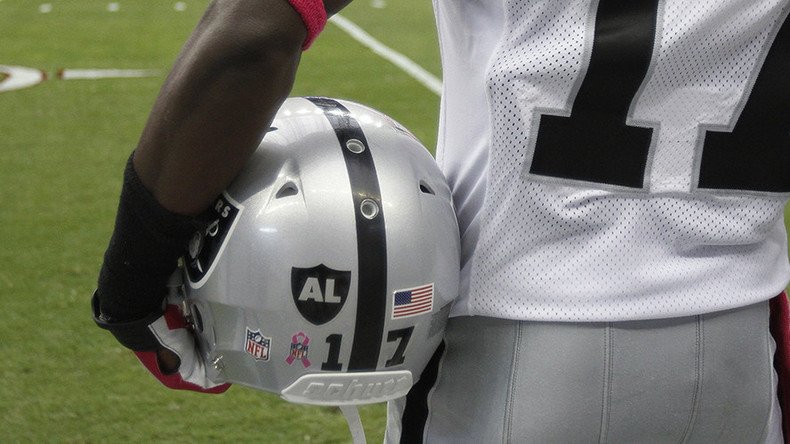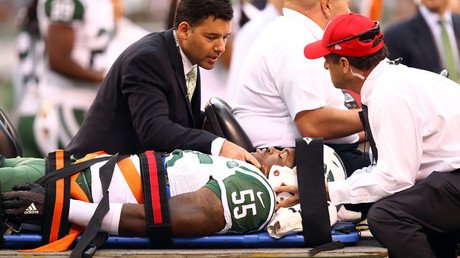99% of deceased NFL players had brain damage, study says

Research on 202 deceased American football players found evidence of traumatic brain injury in nearly all of them, from athletes in the professional leagues to college and even high school players.
Chronic traumatic encephalopathy (CTE) was diagnosed in 177 former players, or nearly 90 percent, of brains studied, according to a study published in the Journal of the American Medical Association (JAMA) on Tuesday.
That included 110 of 111 brains from former National Football League (NFL) players - a shocking 99 percent rate, compared to 96 percent found in a 2014 study. CTE is a degenerative brain disease believed to be caused by repeated blows to the head.
“The severity of CTE pathology was distributed across the highest level of play, with all former high school players having mild pathology and the majority of former college, semi-professional, and professional players having severe pathology,” said the study.
“Behavior, mood, and cognitive symptoms were common among those with mild and severe CTE pathology and signs of dementia were common among those with severe CTE pathology.”
Brain injury found in 99 percent of donated brains of NFL players in new study https://t.co/zyn8Fs2EHlpic.twitter.com/LIaPHaAqzK
— The Verge (@verge) July 25, 2017
A panel of neuropathologists made the diagnosis by examining brain tissue samples at the Boston University brain bank, the largest in the world that studies CTE.
The report doesn’t confirm that the condition is common in all football players but it reflects high occurrence in the samples. Many donors or their families contributed samples because of players’ repeated concussions, and the troubling symptoms before death.
“There are many questions that remain unanswered,” said lead author Dr. Ann McKee, a Boston University neuroscientist, according to AP.
New study shows 99% of past @NFL players have chronic traumatic encephalopathy (#CTE) degenerative #brain#injuryhttps://t.co/B5xFWpaU6gpic.twitter.com/GtynHCtD45
— Injury Board (@injuryboard) July 25, 2017
Among those questions are ‘how common is this’ among a general population and all football players, ‘how many years of football is too many,’ and ‘what is the generic risk’?
In addition to the NFL players, CTE was found in brain samples of 48 out of 53 college players, nine out of 14 brains of semi-professional players, seven out of eight brains of players in the Canadian Football League (CFL), and three out of 14 high school players.
The average age of death among all players studied was 66. There were 18 suicides among the 177 diagnosed.
The largest share of those tested by Dr. McKee were linemen, players who knock heads on most plays. Physicians who study brain trauma say CTE might be caused by the accumulation of seemingly benign, non-violent blows, rather than head-jarring concussions alone.
Data compiled by researchers at Stanford showed that one college offensive line sustained 62 of these hits in a single game.
“Each one came with an average force on the player’s head equivalent to what you would see if he had driven his car into a brick wall at 30 mph,”reported the New York Times.
CTE leads to progressive loss of normal brain matter and an abnormal buildup of a protein called tau. Combat veterans and athletes in rough contact sports like football and boxing are among those thought to be most at risk.
“It is no longer debatable whether or not there is a problem in football – there is a problem,” Dr. McKee told the New York Times.
After years of denials, the NFL acknowledged a link between head blows and brain disease and agreed in a $1 billion settlement to compensate former players who had accused the league of hiding the risks.
The study is being released just five months after a class-action lawsuit filed by former football players accused 32 NFL teams of pumping players with painkillers to keep them on the field, while handling and transporting drugs against the guidance of federal authorities.
The federal lawsuit alleges wanton distribution of powerful painkillers and anti-inflammatory drugs to players, as well as a culture of storage and transportation of the drugs that violates numerous federal and state drug laws.
The court filing includes testimony and documented evidence from team and NFL medical personnel, and details the brazen attitude toward the handling, record-keeping and distribution of controlled substances by the league and its teams.












